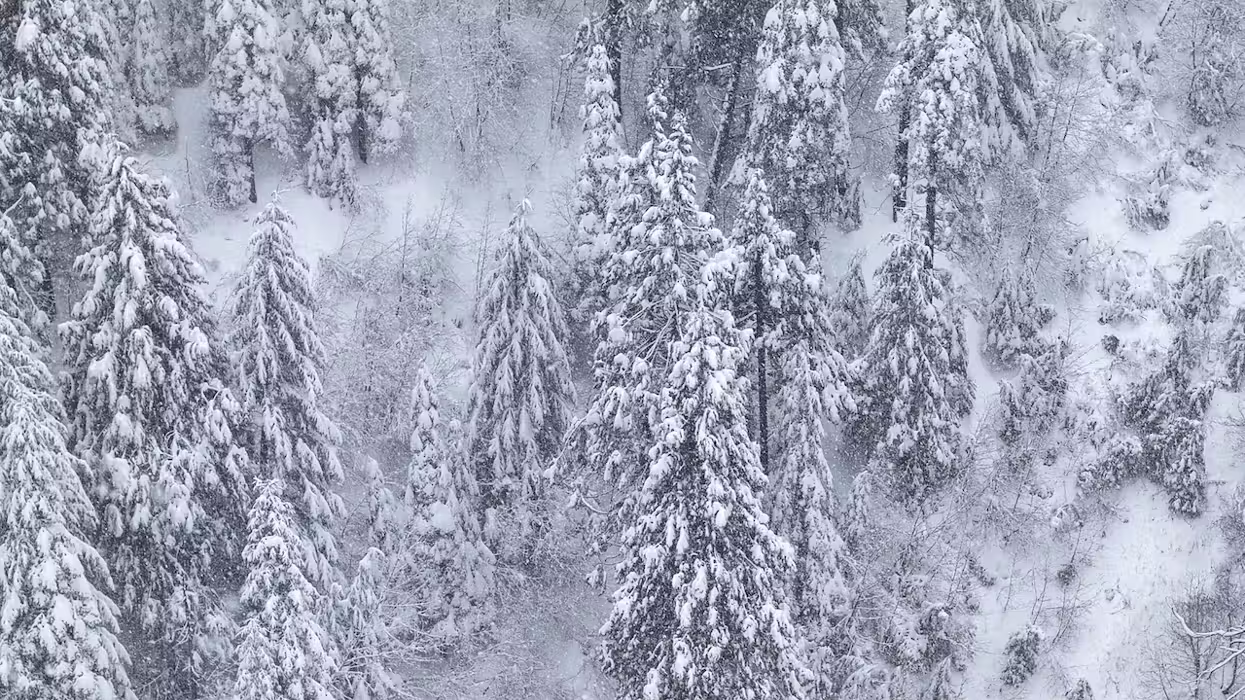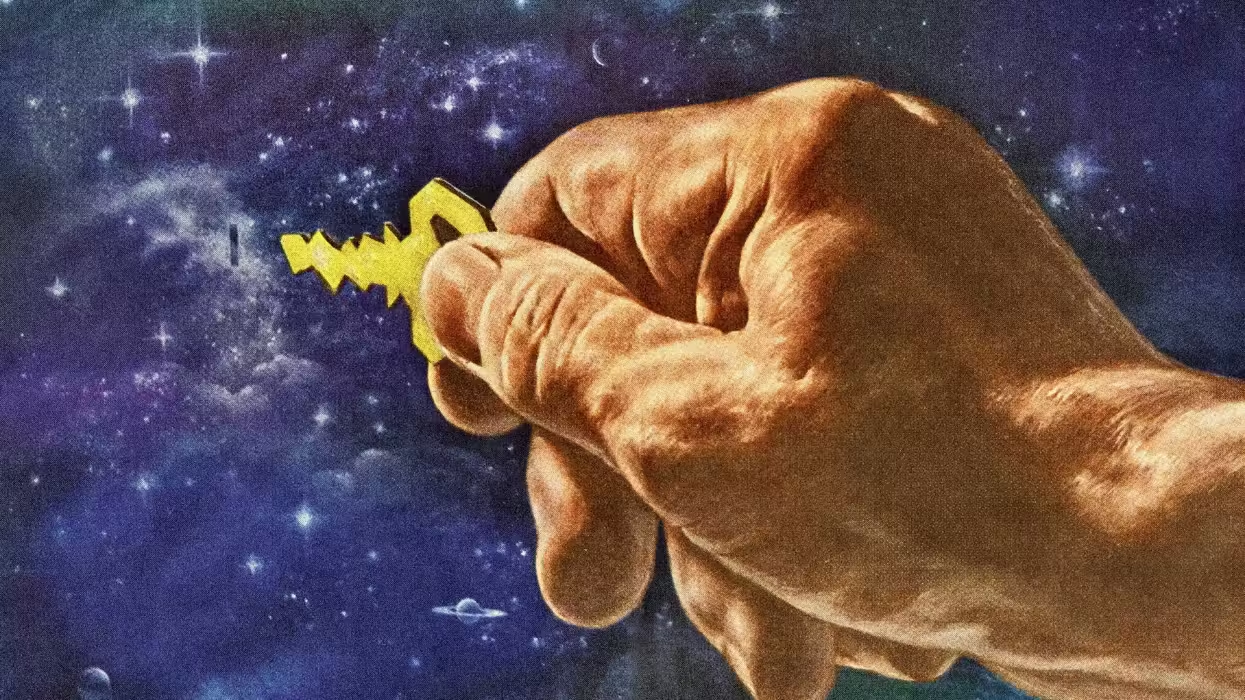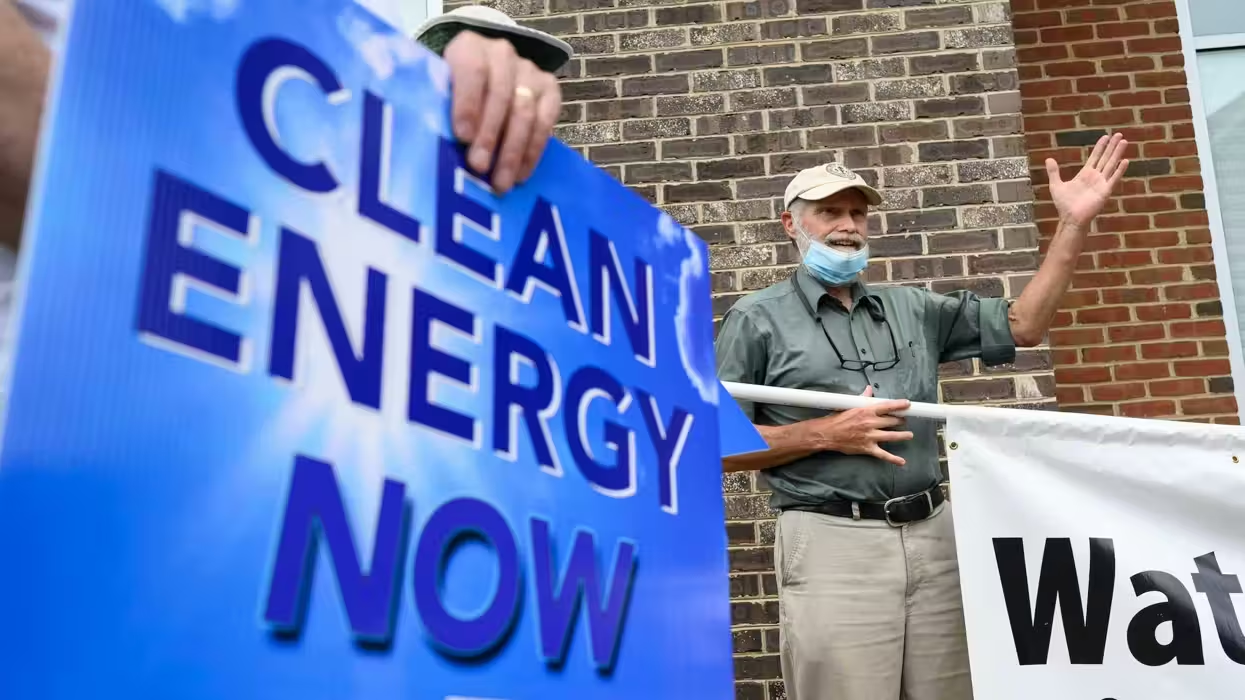HONOLULU (TheBlaze/AP) — Flowing lava from an erupting volcano could soon force dozens of residents of an area in Hawaii to flee their homes.
 In this Oct. 24, 2014 photo from the U.S. Geological Survey, the lava flow from Kilauea Volcano that began June 27 is seen as it crossed Apa'a Street near Cemetery Road near the town of Pahoa on the Big Island of Hawaii. Hawaii authorities on Saturday told several dozen residents near the active lava flow to prepare for a possible evacuation in the next three to five days as molten rock oozed across the country road and edged closer to homes. The USGS says the flow is currently about 160 to 230 feet (50 to 70 meters) wide and moving northeast at about 10 yards (nine meters) per hour. It's currently about six-tenths of a mile (one kilometer) from Pahoa Village Road, the town's main street. (AP Photo/U.S. Geological Survey)
In this Oct. 24, 2014 photo from the U.S. Geological Survey, the lava flow from Kilauea Volcano that began June 27 is seen as it crossed Apa'a Street near Cemetery Road near the town of Pahoa on the Big Island of Hawaii. Hawaii authorities on Saturday told several dozen residents near the active lava flow to prepare for a possible evacuation in the next three to five days as molten rock oozed across the country road and edged closer to homes. The USGS says the flow is currently about 160 to 230 feet (50 to 70 meters) wide and moving northeast at about 10 yards (nine meters) per hour. It's currently about six-tenths of a mile (one kilometer) from Pahoa Village Road, the town's main street. (AP Photo/U.S. Geological Survey)
Authorities on Saturday told them to prepare for a possible evacuation in the next three to five days as the molten rock oozed across a country road and edged closer to homes.
KITV-TV reported that local residents had been given an evacuation notice.
The flow was about 35 yards wide and moving northeast at about 10 yards per hour.
Lava of some 2,000 degrees Fahrenheit crossed a road on the edge of Pahoa, the largest town in the mostly rural region of Puna on the Big Island of Hawaii, at 3:50 a.m.
 Pahoa's location on Hawaii's Big Island. (Images via Google Maps)
Pahoa's location on Hawaii's Big Island. (Images via Google Maps)
It was about six-tenths of a mile from Pahoa Village Road, the town's main street.
 In this Oct. 22, 2014 photo provided by the United States Geological Survey, Hawaii Volcano Observatory geologists walk over the surface of the flow to track surface breakouts along a portion of the flow margin, about a kilometer (0.6 miles) upslope of the flow front, as the lava advances on the town of Pahoa on the Big Island of hawaii. Scorched and burned trees are seena t rear. The growing stream of lava threatening homes is expanding and speeding up as it heads toward the small rural town. Officials say the lava advanced nearly 460 yards from Thursday morning to Friday, Oct. 24, 2014. (AP Photo/U.S. Geological Survey)
In this Oct. 22, 2014 photo provided by the United States Geological Survey, Hawaii Volcano Observatory geologists walk over the surface of the flow to track surface breakouts along a portion of the flow margin, about a kilometer (0.6 miles) upslope of the flow front, as the lava advances on the town of Pahoa on the Big Island of hawaii. Scorched and burned trees are seena t rear. The growing stream of lava threatening homes is expanding and speeding up as it heads toward the small rural town. Officials say the lava advanced nearly 460 yards from Thursday morning to Friday, Oct. 24, 2014. (AP Photo/U.S. Geological Survey)
It's not clear when it might reach the village road as the flow has been advancing erratically, said Matt Patrick, a geologist with the Hawaiian Volcano Observatory.
Kilauea volcano has been erupting continuously since 1983. Most lava from this eruption has flowed south, enveloping the Kalapana and Royal Garden residential subdivisions as it poured out to sea.
For the past two years, however, the lava has been flowing to the northeast, bringing it to Pahoa's doorsteps.
Officials were going door-to door to about 50 homes to keep residents informed of the lava's movement, said Darryl Oliveira, the director of civil defense for Hawaii County.
"This is all something we've been preparing for and hoping wouldn't have to happen," Oliveira said.
The county will issue a mandatory evacuation order if the flow begins advancing at such a rate that it would be difficult for people to move out of the way with little notice, Oliveira said.
Burning asphalt was generating some smoke, but Oliveira said the wind dispersed the fumes over unpopulated areas and it didn't pose a health risk at the moment.
Oliveira said the current situation differs from the flows of past decades because the lava is now approaching the center of a community. Pahoa is not only more densely populated, he said, but it also has commercial and industrial sites as well as residential homes.
The current flow that has been threatening Pahoa began in June. It's been moving fitfully toward the town for weeks, speeding up and then slowing down.
 FILE - This Sept. 15, 2014 file photo provided by the U.S. Geological Survey shows a close view of the surface activity from lava flow that began on June 27, 2014 from the Kilauea volcano in Pahoa, on the Big Island of Hawaii. Residents on Hawaii’s southernmost island have already dealt with one tropical storm this year and are currently coping with the threat of slowly encroaching lava. Now, meteorologists say another hurricane is heading for the Big Island of Hawaii. The governor on Wednesday, Oct. 15, 2014, proclaimed an emergency to help the state respond to the storm. (AP Photo/U.S. Geological Survey, File)
FILE - This Sept. 15, 2014 file photo provided by the U.S. Geological Survey shows a close view of the surface activity from lava flow that began on June 27, 2014 from the Kilauea volcano in Pahoa, on the Big Island of Hawaii. Residents on Hawaii’s southernmost island have already dealt with one tropical storm this year and are currently coping with the threat of slowly encroaching lava. Now, meteorologists say another hurricane is heading for the Big Island of Hawaii. The governor on Wednesday, Oct. 15, 2014, proclaimed an emergency to help the state respond to the storm. (AP Photo/U.S. Geological Survey, File)
Sporadic suspensions in the lava's movement gave emergency crews time to work on building alternate routes to town in the event the flow covers the main road and highway.
Crews near the leading edge have been wrapping power poles with concrete rings as a layer of protection from the lava's heat.
The lava's pace picked up in recent days when it reached a gully, allowing it to move more efficiently like rain in a gutter.
Despite the danger, local residents expressed readiness for the lava.
“This community is a unique one in how well they pull together,” Dave Ewing, owner of a Pahoa coffee shop, told West Hawaii Today. “Everyone is helping each other not be stressed. This is just nature. We know we’re living next to a volcano.”
Hawaii Gov. Neil Abercrombie on Friday asked for a presidential disaster declaration to enable federal help for local emergency crews.
—

 In this Oct. 24, 2014 photo from the U.S. Geological Survey, the lava flow from Kilauea Volcano that began June 27 is seen as it crossed Apa'a Street near Cemetery Road near the town of Pahoa on the Big Island of Hawaii. Hawaii authorities on Saturday told several dozen residents near the active lava flow to prepare for a possible evacuation in the next three to five days as molten rock oozed across the country road and edged closer to homes. The USGS says the flow is currently about 160 to 230 feet (50 to 70 meters) wide and moving northeast at about 10 yards (nine meters) per hour. It's currently about six-tenths of a mile (one kilometer) from Pahoa Village Road, the town's main street. (AP Photo/U.S. Geological Survey)
In this Oct. 24, 2014 photo from the U.S. Geological Survey, the lava flow from Kilauea Volcano that began June 27 is seen as it crossed Apa'a Street near Cemetery Road near the town of Pahoa on the Big Island of Hawaii. Hawaii authorities on Saturday told several dozen residents near the active lava flow to prepare for a possible evacuation in the next three to five days as molten rock oozed across the country road and edged closer to homes. The USGS says the flow is currently about 160 to 230 feet (50 to 70 meters) wide and moving northeast at about 10 yards (nine meters) per hour. It's currently about six-tenths of a mile (one kilometer) from Pahoa Village Road, the town's main street. (AP Photo/U.S. Geological Survey)





